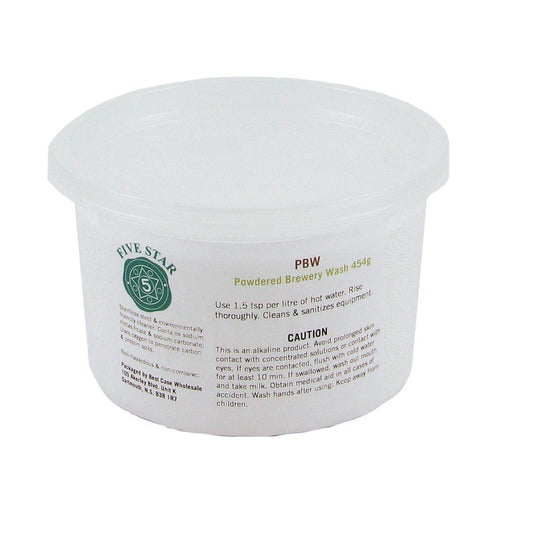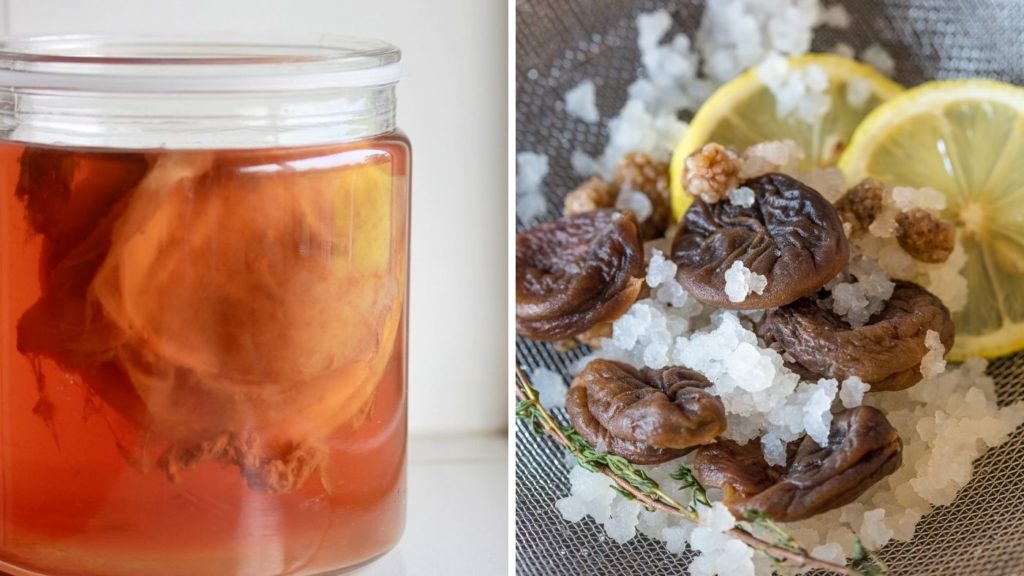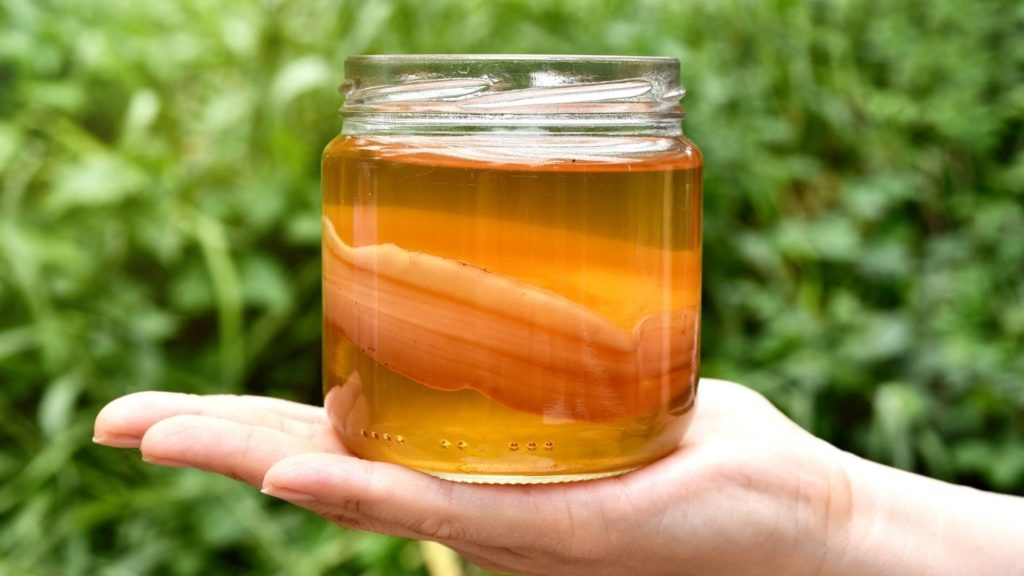You’d like to make homemade kombucha, but don’t know what brewing equipment to choose? In this article, find out which material is a must for making kombucha, which is optional, and which to avoid.
To make homemade kombucha, you’ll need at least the following supplies:
- A wide mouth jar
- A cloth that allows oxygen to circulate (plus the rubber band to secure it)
- Pressure resistant bottles
Other kombucha making supplies can also be used. They are, however, optional, or even already in your kitchen!
Psst, you can also get our kombucha brewing kit! And check out all our equipment.
Kombucha Brewing Kit
$42.90 - $54.80
Making homemade kombucha is simple, easy, and inexpensive!
Shop nowSave time with our all-in-one homemade kombucha kit – a quality choice for an easy start!
Which Brewing Vessel to Use to Make Kombucha?
The must-have for your kombucha adventure? 1 gallon (3.8 litre) glass jar with a wide opening.
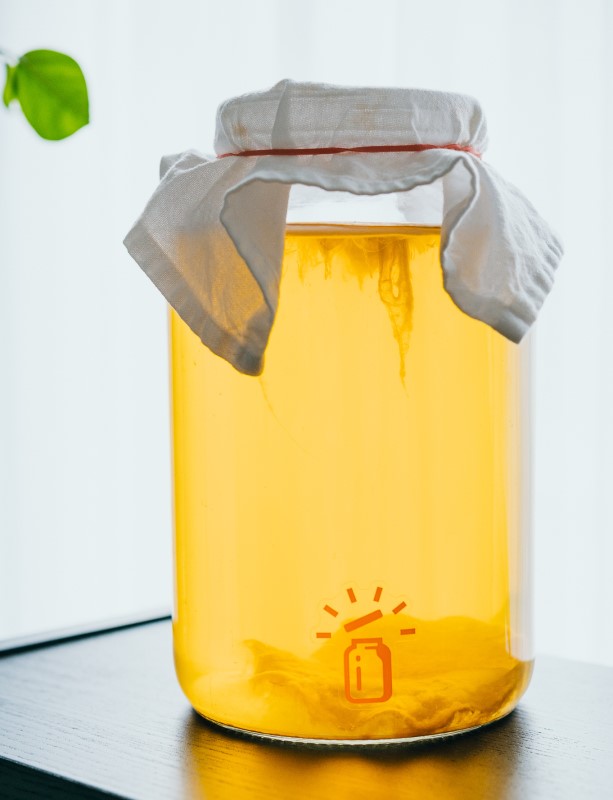
Why? The volume is ideal, and the wide opening is the key to optimal oxygenation, which is necessary for healthy kombucha!
What Material Should My Kombucha Brewing Vessel Be Made Of?
There are several options:
- Glass: Transparent, easy to clean, and safe, it’s the undisputed winner.
- Plastic: Opt only for food-grade, high-density plastic (HDPE), like the plastic boilers used in the food industry.
- Stainless steel: Used by the pros! Professional kombucha makers love stainless steel tanks (or vessels).
1 Gallon Fermenting Glass Jar
$27.50 - $32.29
Simplify your homemade fermentation production with this high-quality 1 gallon fermenting glass jar, with or without airlock!
Shop now💥 Let’s bust one metal myth!
We often hear that kombucha and metal don’t mix. Not true! Stainless steel, which is commonly used in kitchens, is perfectly resistant to contact with kombucha. So don’t hesitate to use your stainless steel utensils (colander, spoon, knife)!
What Brewing Vessels to Avoid?
- Narrow mouth containers: Kombucha will not get enough oxygen from these containers.
- Old ceramic jars: Many jars contain lead, which is dangerous for your health. What’s more, their fragility is legendary.
Which Fabric to Cover Kombucha?
Kombucha needs oxygen to ferment! Therefore, it’s essential to cover the opening of the jar with a cloth. Not only does this allow good oxygenation, which is essential for fermentation, but it also protects your precious beverage from enemies such as fruit flies, as well as debris and dust.
Choose a fine mesh fabric: a dishcloth, a napkin, an old (but clean!) sweater, or a fine cotton fabric embroidered with our beautiful logo 🤩.
Fermentation Cloth Cover With Rubber Bands
$5.00
This lovely cotton cover is an ideal kombucha jar cover and also works as a general fermentation cloth cover.
Shop nowKombucha Cover Fabrics to Avoid
- Etamine (cheesecloth): The mesh, which is too large, allows fruit flies to sneak into your jar… Horrifying! ☠️
- Coffee filters: They don’t allow for proper aeration.
Which Bottles for Bottling Kombucha?
You’ve brewed a delicious kombucha and now it’s time to bottle it. But which bottle should you choose?
To ensure that your kombucha is fizzy and keeps well, you need a bottle that is:
- Hermetically sealed: To trap bubbles and create fizz.
- Pressure resistant: To avoid explosion…
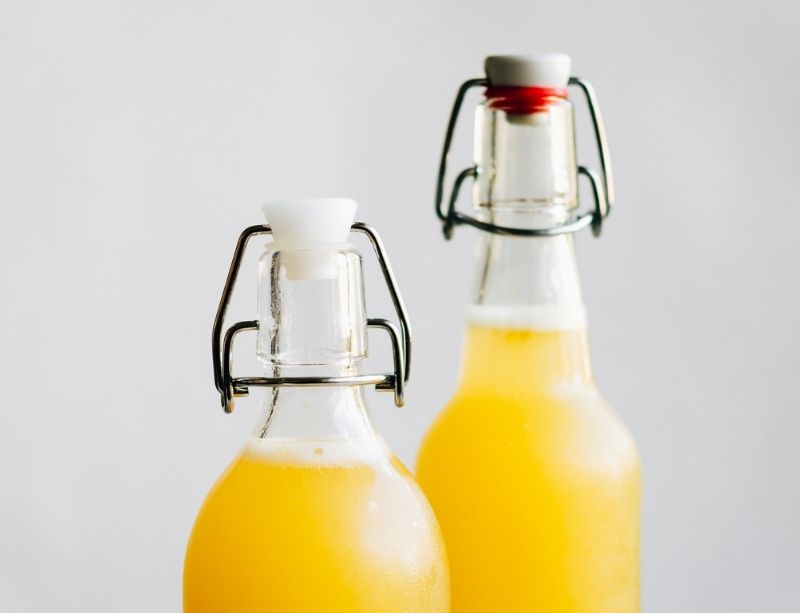
The best kombucha bottles are:
- Swing top bottles: These bottles ensure long-term durability and give your kombucha a professional look.
- “Grolsch” type beer bottles: Strong and airtight, they are economical and retain the fizz well.
- Carbonated beverage bottles: An economical and practical choice!
750ml Swing Top Glass Bottles (Case of 12)
$49.90 $58.90
Effortlessly store and carbonate your fermented beverages with these foolproof swing-top glass bottles!
Shop nowKombucha Bottles to Avoid:
- Decorative bottles: They may look pretty, but they don’t withstand pressure.
- Mason type glass jars: They don’t withstand pressure.
- Old kombucha bottles with broken seals: They may be less airtight and are not ideal in the long term.
Optional Accessories
Beyond the essential supplies, other accessories can make your kombucha-making experience even more enjoyable and convenient. Let’s discover them!
🍵 For Tea Making
- Tea ball/infuser: Useful if you’re using loose tea. Choose one with fine mesh to limit tea debris. You can also use a small cotton bag or compostable tea sachets.

🍾 For Filtering and Bottling
- Sieve or filter: A fine mesh sieve is useful for filtering kombucha before drinking. It can be made of metal or nylon. A coffee filter or, better still, a nylon filter bag, can be very handy.
- Racking cane: A racking cane (auto siphon) helps prevent transferring yeast sediment from the bottom of your fermentation jar when bottling.
- Metal or plastic funnel to properly pour your kombucha into the bottles. Opt for a funnel with a built-in filter to remove any impurities.
Stainless Steel Funnel With Strainer
$14.30
Transferring your fermented beverages and other liquids into a container has never been easier than with this stainless steel funnel with a strainer!
Shop now🌡️ For Monitoring Fermentation
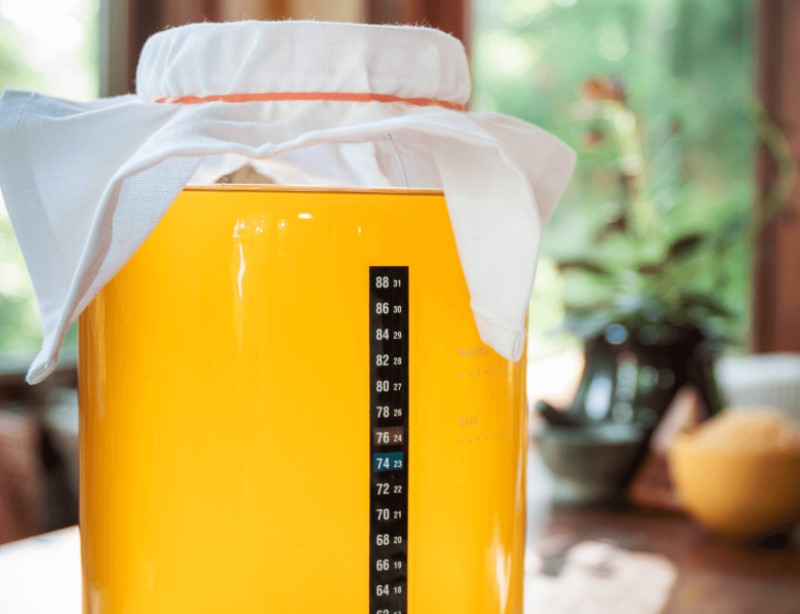
- Self-adhesive thermometer: Allows you to see the fermentation temperature at a glance. We recommend fermentation between 18 and 30°C.
- Heating mat: Useful in winter to warm up kombucha that is too cold.
- Refractometer: Used to determine residual sugar content. Learn how to calculate the sugar in your kombucha.
- pH paper or pH meter: These can be useful for measuring acidity and ensuring a safe pH level for your kombucha. However, they are optional for domestic use.
Brix Refractometer (Sugar Tester)
$44.50
An affordable and accurate Brix refractometer to measure the sugar content of your fermentations, such as kombucha!
Shop now🧹 For Cleaning
- Brewery wash: A soap specially designed to remove stubborn residues in bottles. Allow to work, then rinse. Highly effective.
- Long, flexible brush: ideal for cleaning the inside of bottles. It reaches difficult nooks and crannies and scrubs narrow necks for a thorough clean.
- Dish soap: An affordable and accessible option for cleaning bottles. Shake hard, and allow to work. Does not clean thoroughly.
PBW Cleaner (Powdered Brewery Wash)
$13.90
Powdered Brewery Wash, or PBW cleaner, is a must for any fermenter that wants to improve their equipment cleaning!
Shop now





